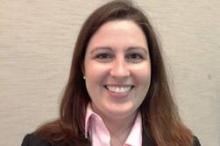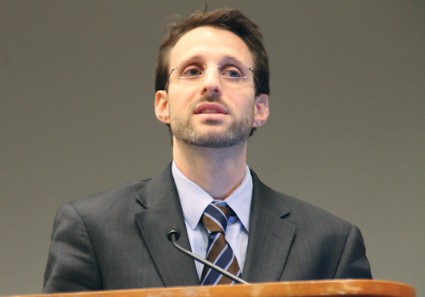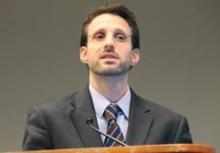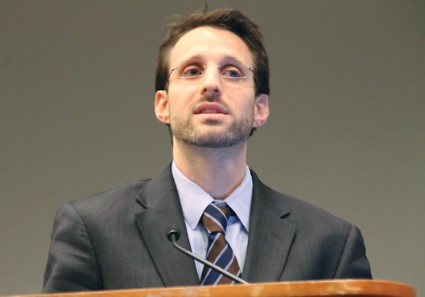User login
GAO: Undercover agents effectively scammed healthcare.gov
Fictitious applicants were able to gain coverage from the federal health insurance marketplace and receive approximately $30,000 in subsidies over a 2-year period, according to a government watchdog agency.
Investigators with the Government Accountability Office (GAO) conducted 18 undercover tests including submitting 12 applications to healthcare.gov via telephone or online. Almost all (11) were successful and were awarded subsidies totaling almost $30,000. Of those, seven applications were approved based on incomplete and false information, according to a July 15 GAO report.
“While these subsidies, including those granted to GAO’s fictitious applicants, are paid to health care insurers, and not directly to enrolled consumers, they nevertheless represent a benefit to consumers and a cost to the government,” according to the report.
The Senate Finance Committee will hold a hearing on the report July 16.
“That the administration failed to weed out fake applicants 1 year later is yet another shocking development that, unfortunately, continues the trend of Obamacare’s gross mismanagement at the expense of hardworking taxpayers,” Sen. Orrin Hatch (R-Utah), chairman of the Finance Committee, said in a statement. “Not only does this negligence enhance the likelihood for abuse of taxpayer dollars, but it also calls into question the legitimacy of the health law’s enrollment numbers and challenges the integrity of the website’s security checks.”
Click here to read the GAO report.
[email protected]
On Twitter @denisefulton
Fictitious applicants were able to gain coverage from the federal health insurance marketplace and receive approximately $30,000 in subsidies over a 2-year period, according to a government watchdog agency.
Investigators with the Government Accountability Office (GAO) conducted 18 undercover tests including submitting 12 applications to healthcare.gov via telephone or online. Almost all (11) were successful and were awarded subsidies totaling almost $30,000. Of those, seven applications were approved based on incomplete and false information, according to a July 15 GAO report.
“While these subsidies, including those granted to GAO’s fictitious applicants, are paid to health care insurers, and not directly to enrolled consumers, they nevertheless represent a benefit to consumers and a cost to the government,” according to the report.
The Senate Finance Committee will hold a hearing on the report July 16.
“That the administration failed to weed out fake applicants 1 year later is yet another shocking development that, unfortunately, continues the trend of Obamacare’s gross mismanagement at the expense of hardworking taxpayers,” Sen. Orrin Hatch (R-Utah), chairman of the Finance Committee, said in a statement. “Not only does this negligence enhance the likelihood for abuse of taxpayer dollars, but it also calls into question the legitimacy of the health law’s enrollment numbers and challenges the integrity of the website’s security checks.”
Click here to read the GAO report.
[email protected]
On Twitter @denisefulton
Fictitious applicants were able to gain coverage from the federal health insurance marketplace and receive approximately $30,000 in subsidies over a 2-year period, according to a government watchdog agency.
Investigators with the Government Accountability Office (GAO) conducted 18 undercover tests including submitting 12 applications to healthcare.gov via telephone or online. Almost all (11) were successful and were awarded subsidies totaling almost $30,000. Of those, seven applications were approved based on incomplete and false information, according to a July 15 GAO report.
“While these subsidies, including those granted to GAO’s fictitious applicants, are paid to health care insurers, and not directly to enrolled consumers, they nevertheless represent a benefit to consumers and a cost to the government,” according to the report.
The Senate Finance Committee will hold a hearing on the report July 16.
“That the administration failed to weed out fake applicants 1 year later is yet another shocking development that, unfortunately, continues the trend of Obamacare’s gross mismanagement at the expense of hardworking taxpayers,” Sen. Orrin Hatch (R-Utah), chairman of the Finance Committee, said in a statement. “Not only does this negligence enhance the likelihood for abuse of taxpayer dollars, but it also calls into question the legitimacy of the health law’s enrollment numbers and challenges the integrity of the website’s security checks.”
Click here to read the GAO report.
[email protected]
On Twitter @denisefulton
FBI investigating link between power morcellators and cancer risk
The FBI has launched an investigation into the use of power morcellators for hysterectomy, and is seeking information on what Johnson & Johnson knew about the use of the devices and the risk of spreading uterine sarcoma, according to a report in the Wall Street Journal.
According to the publication, FBI agents have “interviewed a retired pathologist who alerted [Johnson & Johnson] about potential problems with morcellators in 2006, a doctor who went public after her own cancer was worsened by the tool in 2013, and a California woman who has collected names of close to 400 patients and families of patients who may have been harmed by the tool.”
The Food and Drug Administration warned in November 2014 that power morcellators should not be used in the “vast majority” of women after 2 days of advisory committee hearings last July. Johnson & Johnson halted sales of its devices in July as well.
Read more at wsj.com (subscription required).
The FBI has launched an investigation into the use of power morcellators for hysterectomy, and is seeking information on what Johnson & Johnson knew about the use of the devices and the risk of spreading uterine sarcoma, according to a report in the Wall Street Journal.
According to the publication, FBI agents have “interviewed a retired pathologist who alerted [Johnson & Johnson] about potential problems with morcellators in 2006, a doctor who went public after her own cancer was worsened by the tool in 2013, and a California woman who has collected names of close to 400 patients and families of patients who may have been harmed by the tool.”
The Food and Drug Administration warned in November 2014 that power morcellators should not be used in the “vast majority” of women after 2 days of advisory committee hearings last July. Johnson & Johnson halted sales of its devices in July as well.
Read more at wsj.com (subscription required).
The FBI has launched an investigation into the use of power morcellators for hysterectomy, and is seeking information on what Johnson & Johnson knew about the use of the devices and the risk of spreading uterine sarcoma, according to a report in the Wall Street Journal.
According to the publication, FBI agents have “interviewed a retired pathologist who alerted [Johnson & Johnson] about potential problems with morcellators in 2006, a doctor who went public after her own cancer was worsened by the tool in 2013, and a California woman who has collected names of close to 400 patients and families of patients who may have been harmed by the tool.”
The Food and Drug Administration warned in November 2014 that power morcellators should not be used in the “vast majority” of women after 2 days of advisory committee hearings last July. Johnson & Johnson halted sales of its devices in July as well.
Read more at wsj.com (subscription required).
Youth may counteract weight gain when it comes to cesarean risk
SAN FRANCISCO – Excessive gestational weight gain increased the risk of cesarean delivery in all ages; however, less so in pregnant teens than in adults in a population-based cohort study of more than 1,000,000 births.
Dr. Margaret E. Beaudrot and her colleagues at the University of Cincinnati looked at all births in Ohio from 2006 to 2012, focusing on the 309,935 live singleton births to first-time mothers.
They assessed the association between body mass index, gestational weight gain, and cesarean delivery risk among four groups: teens younger than 15 years, teens aged 15-17 years, teens aged 18-19 years, and adult women aged 20-34. Data were adjusted for breech presentation and labor induction.
Most births (78.5%) were to adult women. Among teen mothers, 15% were aged 18-19 years, 6% were aged 15-17 years, and less than 1% were under age 15.
The overall cesarean rate was 27%. Cesareans were significantly more common in adults (29%) than in mothers younger than 15 years (18%), 15-17 years (18%), and teens aged 18-19 years (21%).
Three factors were associated with having a cesarean delivery: maternal age, BMI, and excessive gestational weight gain, Dr. Beaudrot said at the annual meeting of the American College of Obstetricians and Gynecologists.
More than half of women in all groups had excessive gestational weight gain based on 2009 recommendations from the Institute of Medicine.
Close to half (44%) of obese adult women with excessive gestational weight gain had a cesarean, as did about a third (32%) of overweight adult women with excessive gestational weight gain. Even in women who started their pregnancy at a normal BMI, 26% with excessive weight gain had a cesarean delivery.
Compared with adults, teens had a 47% lower risk of cesarean delivery (adjusted OR 0.53). Across all BMI categories, cesarean rates were higher in teens based on excessive weight gain, with rates ranging from 14% in 15- to 17-year olds who gained too little weight to 24% in 18- to 19-year olds who gained too much weight.
Cesarean rates were lowest in normal-weight teens under 18 years who gained an appropriate amount of weight.
The data “highlight the importance of [patient] education on optimal gestational weight gain, regardless of age in an attempt to reduce the primary c-section rate overall, especially in those at highest risk, obese women of all ages,” Dr. Beaudrot said.
On Twitter @denisefulton
SAN FRANCISCO – Excessive gestational weight gain increased the risk of cesarean delivery in all ages; however, less so in pregnant teens than in adults in a population-based cohort study of more than 1,000,000 births.
Dr. Margaret E. Beaudrot and her colleagues at the University of Cincinnati looked at all births in Ohio from 2006 to 2012, focusing on the 309,935 live singleton births to first-time mothers.
They assessed the association between body mass index, gestational weight gain, and cesarean delivery risk among four groups: teens younger than 15 years, teens aged 15-17 years, teens aged 18-19 years, and adult women aged 20-34. Data were adjusted for breech presentation and labor induction.
Most births (78.5%) were to adult women. Among teen mothers, 15% were aged 18-19 years, 6% were aged 15-17 years, and less than 1% were under age 15.
The overall cesarean rate was 27%. Cesareans were significantly more common in adults (29%) than in mothers younger than 15 years (18%), 15-17 years (18%), and teens aged 18-19 years (21%).
Three factors were associated with having a cesarean delivery: maternal age, BMI, and excessive gestational weight gain, Dr. Beaudrot said at the annual meeting of the American College of Obstetricians and Gynecologists.
More than half of women in all groups had excessive gestational weight gain based on 2009 recommendations from the Institute of Medicine.
Close to half (44%) of obese adult women with excessive gestational weight gain had a cesarean, as did about a third (32%) of overweight adult women with excessive gestational weight gain. Even in women who started their pregnancy at a normal BMI, 26% with excessive weight gain had a cesarean delivery.
Compared with adults, teens had a 47% lower risk of cesarean delivery (adjusted OR 0.53). Across all BMI categories, cesarean rates were higher in teens based on excessive weight gain, with rates ranging from 14% in 15- to 17-year olds who gained too little weight to 24% in 18- to 19-year olds who gained too much weight.
Cesarean rates were lowest in normal-weight teens under 18 years who gained an appropriate amount of weight.
The data “highlight the importance of [patient] education on optimal gestational weight gain, regardless of age in an attempt to reduce the primary c-section rate overall, especially in those at highest risk, obese women of all ages,” Dr. Beaudrot said.
On Twitter @denisefulton
SAN FRANCISCO – Excessive gestational weight gain increased the risk of cesarean delivery in all ages; however, less so in pregnant teens than in adults in a population-based cohort study of more than 1,000,000 births.
Dr. Margaret E. Beaudrot and her colleagues at the University of Cincinnati looked at all births in Ohio from 2006 to 2012, focusing on the 309,935 live singleton births to first-time mothers.
They assessed the association between body mass index, gestational weight gain, and cesarean delivery risk among four groups: teens younger than 15 years, teens aged 15-17 years, teens aged 18-19 years, and adult women aged 20-34. Data were adjusted for breech presentation and labor induction.
Most births (78.5%) were to adult women. Among teen mothers, 15% were aged 18-19 years, 6% were aged 15-17 years, and less than 1% were under age 15.
The overall cesarean rate was 27%. Cesareans were significantly more common in adults (29%) than in mothers younger than 15 years (18%), 15-17 years (18%), and teens aged 18-19 years (21%).
Three factors were associated with having a cesarean delivery: maternal age, BMI, and excessive gestational weight gain, Dr. Beaudrot said at the annual meeting of the American College of Obstetricians and Gynecologists.
More than half of women in all groups had excessive gestational weight gain based on 2009 recommendations from the Institute of Medicine.
Close to half (44%) of obese adult women with excessive gestational weight gain had a cesarean, as did about a third (32%) of overweight adult women with excessive gestational weight gain. Even in women who started their pregnancy at a normal BMI, 26% with excessive weight gain had a cesarean delivery.
Compared with adults, teens had a 47% lower risk of cesarean delivery (adjusted OR 0.53). Across all BMI categories, cesarean rates were higher in teens based on excessive weight gain, with rates ranging from 14% in 15- to 17-year olds who gained too little weight to 24% in 18- to 19-year olds who gained too much weight.
Cesarean rates were lowest in normal-weight teens under 18 years who gained an appropriate amount of weight.
The data “highlight the importance of [patient] education on optimal gestational weight gain, regardless of age in an attempt to reduce the primary c-section rate overall, especially in those at highest risk, obese women of all ages,” Dr. Beaudrot said.
On Twitter @denisefulton
AT THE ACOG ANNUAL CLINICAL MEETING
Key clinical point: Counsel all patients regarding excessive weight gain in pregnancy, especially those who are overweight or obese.
Major finding: Close to half (44%) of obese adult women with excessive gestational weight gain had a cesarean section compared to 13% of normal-weight women 18 years and under with appropriate weight gain.
Data source: Population-based cohort study of all 1,000,000-plus births in Ohio during 2006-2012.
Disclosures: Dr. Beaudrot reported having no conflicts of interest.
ACOG: IV regimen safely resolved acute headache in pregnant women
SAN FRANCISCO – Intravenous metoclopramide and diphenhydramine given together provided more effective headache relief than did codeine in pregnant women who did not respond initially to acetaminophen in an obstetrical triage unit.
Unexplained headache is a fairly common occurrence in pregnancy, estimated to occur in 15%-20% of patients, according to Dr. Katherine Scolari Childress of Saint Louis University.
Acetaminophen is the recommended first-line therapy, she said. But when it does not work, second-line therapy is more controversial. Opiates, NSAIDs, and triptans have all been used; however, these medications have been classified as category C in pregnancy, and there can be the potential for abuse, maternal dependence, neonatal withdrawal, and safety, Dr. Scolari Childress said.
She presented data on 46 normotensive pregnant women in their second or third trimester who presented with headache to an obstetric triage unit. Patients were initially treated with 650-1,000 mg of acetaminophen, which did not adequately resolve their pain. They then were randomized to receive either intravenous metoclopromide and diphenhydramine (MAD) (10 mg and 25 mg, respectively) or 30 mg oral codeine.
Patients who received MAD were significantly more likely to respond to just one dose (100% vs. 62% of patients receiving codeine), significantly more likely to experience full relief of headache pain (65% vs. 29%), and significantly more likely to say they would use the medication again (96% vs. 37%), Dr. Scolari Childress reported at the annual meeting of the American College of Obstetricians and Gynecologists.
Patients treated with MAD also spent less time on the unit – 231 minutes vs. 242 minutes for those treated with codeine – although the difference was not significant.
While the MAD regimen was more expensive than codeine – $1.54 per dose vs. $0.84 – both are low-cost treatments, she said.
Dr. Scolari Childress noted that few studies have been done on treating acute headache in pregnancy; most recommendations are based on studies of nonpregnant patients taking medications that are thought to be safe in pregnancy.
[email protected]
On Twitter @denisefulton
SAN FRANCISCO – Intravenous metoclopramide and diphenhydramine given together provided more effective headache relief than did codeine in pregnant women who did not respond initially to acetaminophen in an obstetrical triage unit.
Unexplained headache is a fairly common occurrence in pregnancy, estimated to occur in 15%-20% of patients, according to Dr. Katherine Scolari Childress of Saint Louis University.
Acetaminophen is the recommended first-line therapy, she said. But when it does not work, second-line therapy is more controversial. Opiates, NSAIDs, and triptans have all been used; however, these medications have been classified as category C in pregnancy, and there can be the potential for abuse, maternal dependence, neonatal withdrawal, and safety, Dr. Scolari Childress said.
She presented data on 46 normotensive pregnant women in their second or third trimester who presented with headache to an obstetric triage unit. Patients were initially treated with 650-1,000 mg of acetaminophen, which did not adequately resolve their pain. They then were randomized to receive either intravenous metoclopromide and diphenhydramine (MAD) (10 mg and 25 mg, respectively) or 30 mg oral codeine.
Patients who received MAD were significantly more likely to respond to just one dose (100% vs. 62% of patients receiving codeine), significantly more likely to experience full relief of headache pain (65% vs. 29%), and significantly more likely to say they would use the medication again (96% vs. 37%), Dr. Scolari Childress reported at the annual meeting of the American College of Obstetricians and Gynecologists.
Patients treated with MAD also spent less time on the unit – 231 minutes vs. 242 minutes for those treated with codeine – although the difference was not significant.
While the MAD regimen was more expensive than codeine – $1.54 per dose vs. $0.84 – both are low-cost treatments, she said.
Dr. Scolari Childress noted that few studies have been done on treating acute headache in pregnancy; most recommendations are based on studies of nonpregnant patients taking medications that are thought to be safe in pregnancy.
[email protected]
On Twitter @denisefulton
SAN FRANCISCO – Intravenous metoclopramide and diphenhydramine given together provided more effective headache relief than did codeine in pregnant women who did not respond initially to acetaminophen in an obstetrical triage unit.
Unexplained headache is a fairly common occurrence in pregnancy, estimated to occur in 15%-20% of patients, according to Dr. Katherine Scolari Childress of Saint Louis University.
Acetaminophen is the recommended first-line therapy, she said. But when it does not work, second-line therapy is more controversial. Opiates, NSAIDs, and triptans have all been used; however, these medications have been classified as category C in pregnancy, and there can be the potential for abuse, maternal dependence, neonatal withdrawal, and safety, Dr. Scolari Childress said.
She presented data on 46 normotensive pregnant women in their second or third trimester who presented with headache to an obstetric triage unit. Patients were initially treated with 650-1,000 mg of acetaminophen, which did not adequately resolve their pain. They then were randomized to receive either intravenous metoclopromide and diphenhydramine (MAD) (10 mg and 25 mg, respectively) or 30 mg oral codeine.
Patients who received MAD were significantly more likely to respond to just one dose (100% vs. 62% of patients receiving codeine), significantly more likely to experience full relief of headache pain (65% vs. 29%), and significantly more likely to say they would use the medication again (96% vs. 37%), Dr. Scolari Childress reported at the annual meeting of the American College of Obstetricians and Gynecologists.
Patients treated with MAD also spent less time on the unit – 231 minutes vs. 242 minutes for those treated with codeine – although the difference was not significant.
While the MAD regimen was more expensive than codeine – $1.54 per dose vs. $0.84 – both are low-cost treatments, she said.
Dr. Scolari Childress noted that few studies have been done on treating acute headache in pregnancy; most recommendations are based on studies of nonpregnant patients taking medications that are thought to be safe in pregnancy.
[email protected]
On Twitter @denisefulton
AT THE ACOG ANNUAL CLINICAL MEETING
Key clinical point: Intravenous metoclopramide and diphenhydramine relieved headaches more effectively than did codeine in pregnant patients who presented urgently.
Major finding: Patients who received MAD were significantly more likely than those who received codeine to experience full relief of headache pain (65% vs. 29%).
Data source: A randomized study of 46 normotensive pregnant women in their second or third trimester with headache that was not resolved with acetaminophen.
Disclosures: The investigators reported no relevant conflicts of interest.
CMS: A few claims were processed at 21% SGR cut level
A small volume of Medicare claims were processed at the 21% pay cut level mandated by the Sustainable Growth Rate formula, according to a provider advisory issued April 15 by the Centers for Medicare & Medicaid Services.
Claims were processed April 15 by Medicare Administrative Contractors as the CMS guidance to hold for 10 business days claims submitted beginning April 1 expired.
The claims will be reprocessed automatically at the higher rate, CMS officials said.
The House and Senate have both passed H.R. 2, the Medicare Access and CHIP Reauthorization Act of 2015, which permanently repeals the SGR, among many other provisions. President Obama has indicated he will sign the legislation.
On Twitter @denisefulton
A small volume of Medicare claims were processed at the 21% pay cut level mandated by the Sustainable Growth Rate formula, according to a provider advisory issued April 15 by the Centers for Medicare & Medicaid Services.
Claims were processed April 15 by Medicare Administrative Contractors as the CMS guidance to hold for 10 business days claims submitted beginning April 1 expired.
The claims will be reprocessed automatically at the higher rate, CMS officials said.
The House and Senate have both passed H.R. 2, the Medicare Access and CHIP Reauthorization Act of 2015, which permanently repeals the SGR, among many other provisions. President Obama has indicated he will sign the legislation.
On Twitter @denisefulton
A small volume of Medicare claims were processed at the 21% pay cut level mandated by the Sustainable Growth Rate formula, according to a provider advisory issued April 15 by the Centers for Medicare & Medicaid Services.
Claims were processed April 15 by Medicare Administrative Contractors as the CMS guidance to hold for 10 business days claims submitted beginning April 1 expired.
The claims will be reprocessed automatically at the higher rate, CMS officials said.
The House and Senate have both passed H.R. 2, the Medicare Access and CHIP Reauthorization Act of 2015, which permanently repeals the SGR, among many other provisions. President Obama has indicated he will sign the legislation.
On Twitter @denisefulton
Senate recesses without addressing SGR repeal bill
The Senate adjourned for a 2-week recess early on March 27, leaving without taking action on House-passed legislation to repeal the Medicare Sustainable Growth Rate formula and reauthorize the Children’s Health Insurance Program.
The Senate will not convene again until April 13, nearly 2 weeks after a temporary SGR patch expires. Doctors will see their Medicare pay cut by 21% on April 1.
As has happened in the SGR’s troubled past and for other reasons, doctors and legislators expect the Centers for Medicare & Medicaid Services to hold Medicare payments for a while until the Senate can act.
“We’ve seen CMS hold checks for 2 weeks. We know that can happen,” Rep. Michael Burgess (R-Texas), lead sponsor of H.R. 2, the Medicare Access and CHIP Reauthorization Act, told reporters. “If it doesn’t pass this week, the world wouldn’t come to an end.”
A 2-week hold generally does not impact physicians’ practices too harshly, Dr. Robert Wergin, president of the American Academy of Family Physicians, said regarding an administrative hold CMS announced in January 2015. “It does affect your cash flow, but it has happened in the past, particularly around the time with SGR patches.”
The American Medical Association called for the Senate to address H.R. 2 as soon as it returns.
“Physicians are always working to provide the highest quality of care for their patients and the bipartisan bill passed by the House provides a clear pathway for them to do that,” Dr. Robert Wah, president of the AMA, said in a statement. “We urge the Senate to immediately address this issue upon their return and once-and-for-all lay this destructive issue to rest by building the stable and sustainable Medicare program that our nation’s patients and physicians need and deserve.”
On Twitter @denisefulton
The Senate adjourned for a 2-week recess early on March 27, leaving without taking action on House-passed legislation to repeal the Medicare Sustainable Growth Rate formula and reauthorize the Children’s Health Insurance Program.
The Senate will not convene again until April 13, nearly 2 weeks after a temporary SGR patch expires. Doctors will see their Medicare pay cut by 21% on April 1.
As has happened in the SGR’s troubled past and for other reasons, doctors and legislators expect the Centers for Medicare & Medicaid Services to hold Medicare payments for a while until the Senate can act.
“We’ve seen CMS hold checks for 2 weeks. We know that can happen,” Rep. Michael Burgess (R-Texas), lead sponsor of H.R. 2, the Medicare Access and CHIP Reauthorization Act, told reporters. “If it doesn’t pass this week, the world wouldn’t come to an end.”
A 2-week hold generally does not impact physicians’ practices too harshly, Dr. Robert Wergin, president of the American Academy of Family Physicians, said regarding an administrative hold CMS announced in January 2015. “It does affect your cash flow, but it has happened in the past, particularly around the time with SGR patches.”
The American Medical Association called for the Senate to address H.R. 2 as soon as it returns.
“Physicians are always working to provide the highest quality of care for their patients and the bipartisan bill passed by the House provides a clear pathway for them to do that,” Dr. Robert Wah, president of the AMA, said in a statement. “We urge the Senate to immediately address this issue upon their return and once-and-for-all lay this destructive issue to rest by building the stable and sustainable Medicare program that our nation’s patients and physicians need and deserve.”
On Twitter @denisefulton
The Senate adjourned for a 2-week recess early on March 27, leaving without taking action on House-passed legislation to repeal the Medicare Sustainable Growth Rate formula and reauthorize the Children’s Health Insurance Program.
The Senate will not convene again until April 13, nearly 2 weeks after a temporary SGR patch expires. Doctors will see their Medicare pay cut by 21% on April 1.
As has happened in the SGR’s troubled past and for other reasons, doctors and legislators expect the Centers for Medicare & Medicaid Services to hold Medicare payments for a while until the Senate can act.
“We’ve seen CMS hold checks for 2 weeks. We know that can happen,” Rep. Michael Burgess (R-Texas), lead sponsor of H.R. 2, the Medicare Access and CHIP Reauthorization Act, told reporters. “If it doesn’t pass this week, the world wouldn’t come to an end.”
A 2-week hold generally does not impact physicians’ practices too harshly, Dr. Robert Wergin, president of the American Academy of Family Physicians, said regarding an administrative hold CMS announced in January 2015. “It does affect your cash flow, but it has happened in the past, particularly around the time with SGR patches.”
The American Medical Association called for the Senate to address H.R. 2 as soon as it returns.
“Physicians are always working to provide the highest quality of care for their patients and the bipartisan bill passed by the House provides a clear pathway for them to do that,” Dr. Robert Wah, president of the AMA, said in a statement. “We urge the Senate to immediately address this issue upon their return and once-and-for-all lay this destructive issue to rest by building the stable and sustainable Medicare program that our nation’s patients and physicians need and deserve.”
On Twitter @denisefulton
VIDEO: Public testimony gets heated at FDA panel meeting on morcellation
SILVER SPRING, MD. – Power morcellation devices should be never used for gynecologic procedures, Dr. Hooman Noorchashm testified to a Food and Drug Administration expert panel on July ll.
He called out members of the FDA Obstetrics and Gynecology Devices Panel Advisory Committee by name, seeking to shame them into action to disallow power morcellation for suspected uterine fibroids.
"Is this a safe and logical device?" said Dr. Noorchashm, a cardiothoracic surgeon at Brigham and Women’s Hospital in Boston. "The only classification for this device is banned – unsafe, illogical, incorrect, and deadly."
Dr. Noorchashm’s wife, Dr. Amy Reed, had a hysterectomy with morcellation for suspected fibroids. Biopsy later confirmed sarcoma was present. Use of power morcellation caused tumor cells to spread, upstaging her sarcoma to stage IV.
On Twitter @denisefulton
SILVER SPRING, MD. – Power morcellation devices should be never used for gynecologic procedures, Dr. Hooman Noorchashm testified to a Food and Drug Administration expert panel on July ll.
He called out members of the FDA Obstetrics and Gynecology Devices Panel Advisory Committee by name, seeking to shame them into action to disallow power morcellation for suspected uterine fibroids.
"Is this a safe and logical device?" said Dr. Noorchashm, a cardiothoracic surgeon at Brigham and Women’s Hospital in Boston. "The only classification for this device is banned – unsafe, illogical, incorrect, and deadly."
Dr. Noorchashm’s wife, Dr. Amy Reed, had a hysterectomy with morcellation for suspected fibroids. Biopsy later confirmed sarcoma was present. Use of power morcellation caused tumor cells to spread, upstaging her sarcoma to stage IV.
On Twitter @denisefulton
SILVER SPRING, MD. – Power morcellation devices should be never used for gynecologic procedures, Dr. Hooman Noorchashm testified to a Food and Drug Administration expert panel on July ll.
He called out members of the FDA Obstetrics and Gynecology Devices Panel Advisory Committee by name, seeking to shame them into action to disallow power morcellation for suspected uterine fibroids.
"Is this a safe and logical device?" said Dr. Noorchashm, a cardiothoracic surgeon at Brigham and Women’s Hospital in Boston. "The only classification for this device is banned – unsafe, illogical, incorrect, and deadly."
Dr. Noorchashm’s wife, Dr. Amy Reed, had a hysterectomy with morcellation for suspected fibroids. Biopsy later confirmed sarcoma was present. Use of power morcellation caused tumor cells to spread, upstaging her sarcoma to stage IV.
On Twitter @denisefulton
AT AN FDA ADVISORY COMMITTEE MEETING
House passes temporary SGR fix, 1-year ICD-10 delay
Legislation to delay the 24% Medicare pay cut based on the Sustainable Growth Rate formula passed the House by a voice vote March 27, despite the objections of a large coalition of physician organizations.
The Protecting Access to Medicare Act (H.R. 4302) would delay the SGR-mandated cut slated to take effect March 31, replace it with a 0.5% pay increase through the end of 2014, and freeze Medicare pay at that rate for the first quarter of 2015. The bill also would delay implementation of ICD-10 for 1 year.
At press time, it was uncertain if the Senate would take up the bill.
Physicians organizations favor full repeal of the SGR and would like to see it replaced with a payment and delivery system reform policy that passed the House earlier this month as H.R. 4015. Financing for that legislation depended on a 5-year delay on the Affordable Care Act’s individual mandate, something most Democratic lawmakers do not support. H.R. 4015 had not been taken up by the Senate as the March 31 deadline loomed.
Prior to the vote, a coalition of 58 organizations called on the House to vote against the legislation.
"Instead of reforming the Medicare physician payment system, Congress seems intent on imposing yet another round of arbitrary provider payment reductions to maintain a corrosive policy that essentially every member of Congress says should be scrapped," the coalition wrote in a letter to House Speaker John Boehner (R-Ohio) and Minority Leader Nancy Pelosi (D-Calif.). "The endless cycle of short-term remedies that serve to support a failed policy are no longer acceptable."
[email protected]
On Twitter @denisefulton
Legislation to delay the 24% Medicare pay cut based on the Sustainable Growth Rate formula passed the House by a voice vote March 27, despite the objections of a large coalition of physician organizations.
The Protecting Access to Medicare Act (H.R. 4302) would delay the SGR-mandated cut slated to take effect March 31, replace it with a 0.5% pay increase through the end of 2014, and freeze Medicare pay at that rate for the first quarter of 2015. The bill also would delay implementation of ICD-10 for 1 year.
At press time, it was uncertain if the Senate would take up the bill.
Physicians organizations favor full repeal of the SGR and would like to see it replaced with a payment and delivery system reform policy that passed the House earlier this month as H.R. 4015. Financing for that legislation depended on a 5-year delay on the Affordable Care Act’s individual mandate, something most Democratic lawmakers do not support. H.R. 4015 had not been taken up by the Senate as the March 31 deadline loomed.
Prior to the vote, a coalition of 58 organizations called on the House to vote against the legislation.
"Instead of reforming the Medicare physician payment system, Congress seems intent on imposing yet another round of arbitrary provider payment reductions to maintain a corrosive policy that essentially every member of Congress says should be scrapped," the coalition wrote in a letter to House Speaker John Boehner (R-Ohio) and Minority Leader Nancy Pelosi (D-Calif.). "The endless cycle of short-term remedies that serve to support a failed policy are no longer acceptable."
[email protected]
On Twitter @denisefulton
Legislation to delay the 24% Medicare pay cut based on the Sustainable Growth Rate formula passed the House by a voice vote March 27, despite the objections of a large coalition of physician organizations.
The Protecting Access to Medicare Act (H.R. 4302) would delay the SGR-mandated cut slated to take effect March 31, replace it with a 0.5% pay increase through the end of 2014, and freeze Medicare pay at that rate for the first quarter of 2015. The bill also would delay implementation of ICD-10 for 1 year.
At press time, it was uncertain if the Senate would take up the bill.
Physicians organizations favor full repeal of the SGR and would like to see it replaced with a payment and delivery system reform policy that passed the House earlier this month as H.R. 4015. Financing for that legislation depended on a 5-year delay on the Affordable Care Act’s individual mandate, something most Democratic lawmakers do not support. H.R. 4015 had not been taken up by the Senate as the March 31 deadline loomed.
Prior to the vote, a coalition of 58 organizations called on the House to vote against the legislation.
"Instead of reforming the Medicare physician payment system, Congress seems intent on imposing yet another round of arbitrary provider payment reductions to maintain a corrosive policy that essentially every member of Congress says should be scrapped," the coalition wrote in a letter to House Speaker John Boehner (R-Ohio) and Minority Leader Nancy Pelosi (D-Calif.). "The endless cycle of short-term remedies that serve to support a failed policy are no longer acceptable."
[email protected]
On Twitter @denisefulton
Boceprevir, Telaprevir Linked to Anemia in HCV-infected Seniors
WASHINGTON – Older patients with hepatitis C experienced more adverse events and more serious adverse events while treated with boceprevir or telaprevir, and they discontinued treatment more frequently than did their younger peers, according to data from the HCV-TARGET trial.
Dr. Andrew Aronsohn of the University of Chicago and his colleagues studied a subset of HCV-TARGET that comprised 1,100 patients who started treatment on a direct-acting antiviral agent before April 2012.
Most patients were aged younger than 65 years; 73 were older. Of those, 56 were treated with telaprevir and 17 with boceprevir, Dr. Aronsohn reported at the annual meeting of the American Association for the Study of Liver Diseases.
In the older group, the median age was 67 years; 53% were women. Three-fifths had been treated previously for their hepatitis C infection (HCV).
Seniors were more likely to have diabetes, coronary artery disease, and inferior renal function than were their younger peers, though not significantly so. The rate of cirrhosis in both younger and older patients was roughly the same, at just over 40%.
Treatment response was similar for older and younger patients for both drugs. Sustained virologic response (SVR) to boceprevir in treatment-naive patients was 67% for older patients and 57% for younger patients. For treatment experienced patients, the rates were 36% and 37%, respectively.
SVR to telaprevir in treatment-naive patients was 75% for older patients vs. 60% for younger patients. In treatment-experienced patients, SVR was 53% vs. 59%, respectively.
A greater percentage of older patients discontinued treatment early – 44% vs. 36%.
Nearly all (94%) older patients treated with boceprevir became anemic; 18%, or 3 patients, were classified as having severe anemia, requiring either hospitalization for their anemia or expedited reporting of the adverse event to the Food and Drug Administration. In comparison, 63% of younger patients became anemic, with 6% classified as severe.
In patients treated with telaprevir, 77% of older patients became anemic compared with 65% of younger patients. Anemia was classified as severe in 9% of older patients and 3% of younger ones.
"Seven baseline characteristics were association with anemia," Dr. Aronsohn said. Age was independently associated with developing anemia.
He cautioned that while viral kinetics and treatment outcomes were similar for older and younger patients, adverse events – particularly anemia – and early discontinuation pose a concern in patients aged older than 65 years.
HCV-TARGET is a consortium of more than 100 academic and community medical centers performing a longitudinal, observational study. Treatment is not standardized and is administered per the local standard of care. The investigators seek to capture clinical, adverse event, virological, and demographic data on patients treated for hepatitis C.
Dr. Aronsohn’s conflicts of interest were not available at press time. HCT-TARGET is sponsored by Vertex Pharmaceuticals, Merck, Genentech, and Kadmon Pharmaceuticals.
Denise Fulton, Family Practice News Digital Network
WASHINGTON – Older patients with hepatitis C experienced more adverse events and more serious adverse events while treated with boceprevir or telaprevir, and they discontinued treatment more frequently than did their younger peers, according to data from the HCV-TARGET trial.
Dr. Andrew Aronsohn of the University of Chicago and his colleagues studied a subset of HCV-TARGET that comprised 1,100 patients who started treatment on a direct-acting antiviral agent before April 2012.
Most patients were aged younger than 65 years; 73 were older. Of those, 56 were treated with telaprevir and 17 with boceprevir, Dr. Aronsohn reported at the annual meeting of the American Association for the Study of Liver Diseases.
In the older group, the median age was 67 years; 53% were women. Three-fifths had been treated previously for their hepatitis C infection (HCV).
Seniors were more likely to have diabetes, coronary artery disease, and inferior renal function than were their younger peers, though not significantly so. The rate of cirrhosis in both younger and older patients was roughly the same, at just over 40%.
Treatment response was similar for older and younger patients for both drugs. Sustained virologic response (SVR) to boceprevir in treatment-naive patients was 67% for older patients and 57% for younger patients. For treatment experienced patients, the rates were 36% and 37%, respectively.
SVR to telaprevir in treatment-naive patients was 75% for older patients vs. 60% for younger patients. In treatment-experienced patients, SVR was 53% vs. 59%, respectively.
A greater percentage of older patients discontinued treatment early – 44% vs. 36%.
Nearly all (94%) older patients treated with boceprevir became anemic; 18%, or 3 patients, were classified as having severe anemia, requiring either hospitalization for their anemia or expedited reporting of the adverse event to the Food and Drug Administration. In comparison, 63% of younger patients became anemic, with 6% classified as severe.
In patients treated with telaprevir, 77% of older patients became anemic compared with 65% of younger patients. Anemia was classified as severe in 9% of older patients and 3% of younger ones.
"Seven baseline characteristics were association with anemia," Dr. Aronsohn said. Age was independently associated with developing anemia.
He cautioned that while viral kinetics and treatment outcomes were similar for older and younger patients, adverse events – particularly anemia – and early discontinuation pose a concern in patients aged older than 65 years.
HCV-TARGET is a consortium of more than 100 academic and community medical centers performing a longitudinal, observational study. Treatment is not standardized and is administered per the local standard of care. The investigators seek to capture clinical, adverse event, virological, and demographic data on patients treated for hepatitis C.
Dr. Aronsohn’s conflicts of interest were not available at press time. HCT-TARGET is sponsored by Vertex Pharmaceuticals, Merck, Genentech, and Kadmon Pharmaceuticals.
WASHINGTON – Older patients with hepatitis C experienced more adverse events and more serious adverse events while treated with boceprevir or telaprevir, and they discontinued treatment more frequently than did their younger peers, according to data from the HCV-TARGET trial.
Dr. Andrew Aronsohn of the University of Chicago and his colleagues studied a subset of HCV-TARGET that comprised 1,100 patients who started treatment on a direct-acting antiviral agent before April 2012.
Most patients were aged younger than 65 years; 73 were older. Of those, 56 were treated with telaprevir and 17 with boceprevir, Dr. Aronsohn reported at the annual meeting of the American Association for the Study of Liver Diseases.
In the older group, the median age was 67 years; 53% were women. Three-fifths had been treated previously for their hepatitis C infection (HCV).
Seniors were more likely to have diabetes, coronary artery disease, and inferior renal function than were their younger peers, though not significantly so. The rate of cirrhosis in both younger and older patients was roughly the same, at just over 40%.
Treatment response was similar for older and younger patients for both drugs. Sustained virologic response (SVR) to boceprevir in treatment-naive patients was 67% for older patients and 57% for younger patients. For treatment experienced patients, the rates were 36% and 37%, respectively.
SVR to telaprevir in treatment-naive patients was 75% for older patients vs. 60% for younger patients. In treatment-experienced patients, SVR was 53% vs. 59%, respectively.
A greater percentage of older patients discontinued treatment early – 44% vs. 36%.
Nearly all (94%) older patients treated with boceprevir became anemic; 18%, or 3 patients, were classified as having severe anemia, requiring either hospitalization for their anemia or expedited reporting of the adverse event to the Food and Drug Administration. In comparison, 63% of younger patients became anemic, with 6% classified as severe.
In patients treated with telaprevir, 77% of older patients became anemic compared with 65% of younger patients. Anemia was classified as severe in 9% of older patients and 3% of younger ones.
"Seven baseline characteristics were association with anemia," Dr. Aronsohn said. Age was independently associated with developing anemia.
He cautioned that while viral kinetics and treatment outcomes were similar for older and younger patients, adverse events – particularly anemia – and early discontinuation pose a concern in patients aged older than 65 years.
HCV-TARGET is a consortium of more than 100 academic and community medical centers performing a longitudinal, observational study. Treatment is not standardized and is administered per the local standard of care. The investigators seek to capture clinical, adverse event, virological, and demographic data on patients treated for hepatitis C.
Dr. Aronsohn’s conflicts of interest were not available at press time. HCT-TARGET is sponsored by Vertex Pharmaceuticals, Merck, Genentech, and Kadmon Pharmaceuticals.
Denise Fulton, Family Practice News Digital Network
Denise Fulton, Family Practice News Digital Network
AT THE LIVER MEETING 2013
Boceprevir, telaprevir linked to anemia in HCV-infected seniors
WASHINGTON – Older patients with hepatitis C experienced more adverse events and more serious adverse events while treated with boceprevir or telaprevir, and they discontinued treatment more frequently than did their younger peers, according to data from the HCV-TARGET trial.
Dr. Andrew Aronsohn of the University of Chicago and his colleagues studied a subset of HCV-TARGET that comprised 1,100 patients who started treatment on a direct-acting antiviral agent before April 2012.
Most patients were aged younger than 65 years; 73 were older. Of those, 56 were treated with telaprevir and 17 with boceprevir, Dr. Aronsohn reported at the annual meeting of the American Association for the Study of Liver Diseases.
In the older group, the median age was 67 years; 53% were women. Three-fifths had been treated previously for their hepatitis C infection (HCV).
Seniors were more likely to have diabetes, coronary artery disease, and inferior renal function than were their younger peers, though not significantly so. The rate of cirrhosis in both younger and older patients was roughly the same, at just over 40%.
Treatment response was similar for older and younger patients for both drugs. Sustained virologic response (SVR) to boceprevir in treatment-naive patients was 67% for older patients and 57% for younger patients. For treatment experienced patients, the rates were 36% and 37%, respectively.
SVR to telaprevir in treatment-naive patients was 75% for older patients vs. 60% for younger patients. In treatment-experienced patients, SVR was 53% vs. 59%, respectively.
A greater percentage of older patients discontinued treatment early – 44% vs. 36%.
Nearly all (94%) older patients treated with boceprevir became anemic; 18%, or 3 patients, were classified as having severe anemia, requiring either hospitalization for their anemia or expedited reporting of the adverse event to the Food and Drug Administration. In comparison, 63% of younger patients became anemic, with 6% classified as severe.
In patients treated with telaprevir, 77% of older patients became anemic compared with 65% of younger patients. Anemia was classified as severe in 9% of older patients and 3% of younger ones.
"Seven baseline characteristics were association with anemia," Dr. Aronsohn said. Age was independently associated with developing anemia.
He cautioned that while viral kinetics and treatment outcomes were similar for older and younger patients, adverse events – particularly anemia – and early discontinuation pose a concern in patients aged older than 65 years.
HCV-TARGET is a consortium of more than 100 academic and community medical centers performing a longitudinal, observational study. Treatment is not standardized and is administered per the local standard of care. The investigators seek to capture clinical, adverse event, virological, and demographic data on patients treated for hepatitis C.
Dr. Aronsohn’s conflicts of interest were not available at press time. HCT-TARGET is sponsored by Vertex Pharmaceuticals, Merck, Genentech, and Kadmon Pharmaceuticals.
WASHINGTON – Older patients with hepatitis C experienced more adverse events and more serious adverse events while treated with boceprevir or telaprevir, and they discontinued treatment more frequently than did their younger peers, according to data from the HCV-TARGET trial.
Dr. Andrew Aronsohn of the University of Chicago and his colleagues studied a subset of HCV-TARGET that comprised 1,100 patients who started treatment on a direct-acting antiviral agent before April 2012.
Most patients were aged younger than 65 years; 73 were older. Of those, 56 were treated with telaprevir and 17 with boceprevir, Dr. Aronsohn reported at the annual meeting of the American Association for the Study of Liver Diseases.
In the older group, the median age was 67 years; 53% were women. Three-fifths had been treated previously for their hepatitis C infection (HCV).
Seniors were more likely to have diabetes, coronary artery disease, and inferior renal function than were their younger peers, though not significantly so. The rate of cirrhosis in both younger and older patients was roughly the same, at just over 40%.
Treatment response was similar for older and younger patients for both drugs. Sustained virologic response (SVR) to boceprevir in treatment-naive patients was 67% for older patients and 57% for younger patients. For treatment experienced patients, the rates were 36% and 37%, respectively.
SVR to telaprevir in treatment-naive patients was 75% for older patients vs. 60% for younger patients. In treatment-experienced patients, SVR was 53% vs. 59%, respectively.
A greater percentage of older patients discontinued treatment early – 44% vs. 36%.
Nearly all (94%) older patients treated with boceprevir became anemic; 18%, or 3 patients, were classified as having severe anemia, requiring either hospitalization for their anemia or expedited reporting of the adverse event to the Food and Drug Administration. In comparison, 63% of younger patients became anemic, with 6% classified as severe.
In patients treated with telaprevir, 77% of older patients became anemic compared with 65% of younger patients. Anemia was classified as severe in 9% of older patients and 3% of younger ones.
"Seven baseline characteristics were association with anemia," Dr. Aronsohn said. Age was independently associated with developing anemia.
He cautioned that while viral kinetics and treatment outcomes were similar for older and younger patients, adverse events – particularly anemia – and early discontinuation pose a concern in patients aged older than 65 years.
HCV-TARGET is a consortium of more than 100 academic and community medical centers performing a longitudinal, observational study. Treatment is not standardized and is administered per the local standard of care. The investigators seek to capture clinical, adverse event, virological, and demographic data on patients treated for hepatitis C.
Dr. Aronsohn’s conflicts of interest were not available at press time. HCT-TARGET is sponsored by Vertex Pharmaceuticals, Merck, Genentech, and Kadmon Pharmaceuticals.
WASHINGTON – Older patients with hepatitis C experienced more adverse events and more serious adverse events while treated with boceprevir or telaprevir, and they discontinued treatment more frequently than did their younger peers, according to data from the HCV-TARGET trial.
Dr. Andrew Aronsohn of the University of Chicago and his colleagues studied a subset of HCV-TARGET that comprised 1,100 patients who started treatment on a direct-acting antiviral agent before April 2012.
Most patients were aged younger than 65 years; 73 were older. Of those, 56 were treated with telaprevir and 17 with boceprevir, Dr. Aronsohn reported at the annual meeting of the American Association for the Study of Liver Diseases.
In the older group, the median age was 67 years; 53% were women. Three-fifths had been treated previously for their hepatitis C infection (HCV).
Seniors were more likely to have diabetes, coronary artery disease, and inferior renal function than were their younger peers, though not significantly so. The rate of cirrhosis in both younger and older patients was roughly the same, at just over 40%.
Treatment response was similar for older and younger patients for both drugs. Sustained virologic response (SVR) to boceprevir in treatment-naive patients was 67% for older patients and 57% for younger patients. For treatment experienced patients, the rates were 36% and 37%, respectively.
SVR to telaprevir in treatment-naive patients was 75% for older patients vs. 60% for younger patients. In treatment-experienced patients, SVR was 53% vs. 59%, respectively.
A greater percentage of older patients discontinued treatment early – 44% vs. 36%.
Nearly all (94%) older patients treated with boceprevir became anemic; 18%, or 3 patients, were classified as having severe anemia, requiring either hospitalization for their anemia or expedited reporting of the adverse event to the Food and Drug Administration. In comparison, 63% of younger patients became anemic, with 6% classified as severe.
In patients treated with telaprevir, 77% of older patients became anemic compared with 65% of younger patients. Anemia was classified as severe in 9% of older patients and 3% of younger ones.
"Seven baseline characteristics were association with anemia," Dr. Aronsohn said. Age was independently associated with developing anemia.
He cautioned that while viral kinetics and treatment outcomes were similar for older and younger patients, adverse events – particularly anemia – and early discontinuation pose a concern in patients aged older than 65 years.
HCV-TARGET is a consortium of more than 100 academic and community medical centers performing a longitudinal, observational study. Treatment is not standardized and is administered per the local standard of care. The investigators seek to capture clinical, adverse event, virological, and demographic data on patients treated for hepatitis C.
Dr. Aronsohn’s conflicts of interest were not available at press time. HCT-TARGET is sponsored by Vertex Pharmaceuticals, Merck, Genentech, and Kadmon Pharmaceuticals.
AT THE LIVER MEETING 2013
Major finding: Sixteen of 17 patients aged 65 years or older treated with boceprevir experienced anemia.
Data source: A 1,100-patient subset of HCV-TARGET, a longitudinal, observational study of more than 2,700 patients with hepatitis C.
Disclosures: Dr. Aronsohn’s conflicts of interest were not available at press time. HCT-TARGET is sponsored by Vertex Pharmaceuticals, Merck, Genentech, and Kadmon Pharmaceuticals.













